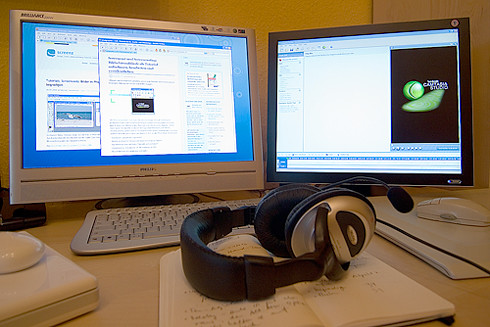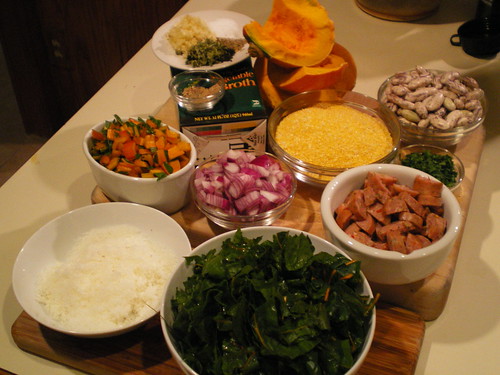When I prepare a screencast I usually clear off my computer’s desktop so folders and other icons that have no connection to the screencast are not displayed. I never thought about clearing off the hard drive icons, too, until I read Mel Aclaro’s 6 Must Do Tips for a Quality Screencast. How do I clear off the drive icons? Drag them over to a second monitor! Aclaro uses his second monitor to help with other details, too. He keeps items there that he plans to use in his screencast so he can pull them over to his first monitor when he wants them to show up on the screencast. It’s also a good spot to post my script or outline for the screencast.
 |
| Manuela Hoffman / Screencast Setup / CC BY-NC-ND 2.0 |
I know that not everyone has two monitors connected to their computers. I don’t. But, many of us have an old monitor that we could use for this purpose. And the IT person at school may likely have an old monitor that he could connect to one of the computers in your classroom. Plus… we have to think big. Right?
I appreciate screencasts that spotlight the cursor so it is easy to follow. I have used software that helps that to happen. But, Aclaro’s recommendation is so easy… we just use the Universal settings that allow us to enlarge the cursor. On a Mac we go to System Preferences > Accessibility > Cursor Size. We can see Windows instructions for doing this at Microsoft’s support page (http://windows.microsoft.com/en-us/windows/make-mouse-easier-to-use#1TC=windows-7).
These are just two of a half-dozen recommendations in Aclaro’s article/video for scaling up the quality of my screencasts.
Wesley Fryer urges us to plan and prepare when our students are going to create screencasts to demonstrate what they have learned. Will the students use photos? Find them. Make them accessible. (See Creating Narrated Slideshows & Screencasts.)
 |
| Jen Waller / Mise en Place / CC BY-NC-SA 2.0 |
I would recommend that the script be written beforehand. Have it ready, too. Having everything at hand and ready to use reminds me of mise en place—the organizing and arranging of ingredients ahead of time for cooking. Having everything prepared saves time and allows us to focus on our goal whether it’s a delicious entrée or a helpful screencast.
Kathy Schrock’s Screencasting in the Classroom provides a wealth of resources on this topic. Two of the ideas I gleaned from her page include reasons why we (both teachers and students) might want to create screencasts and recommendations for creating and using those videos.
Schrock shares why teachers and students might create screencasts:
- enhance explanations with visual information
- model a process for students or for parents
- peer-to-peer tutoring
- respond to problems and questions
- student presentations
- summarize what has been learned
- teach others
- watch and answer questions about a topic BEFORE class
- keep videos short (less than 10 minutes)
- use your voice in the video… students will respond to it better than to someone else’s voice
- hold the students responsible… have them write a summary or answer questions
- ask the participants about their experiences with screencasts
- have them share their ideas for creating screencasts
- provide a list of recommendations for creating quality screencasts (such as the ones in this article)
- provide resources that they can search for more ideas that appeal to them (Scoop.it! has a great list)
- and have them share their ideas with each other
I think I have a good beginning. What would you recommend for the screencasting topic in this workshop?
No comments:
Post a Comment